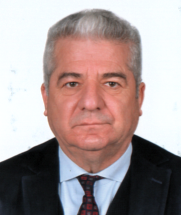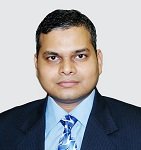Materials Science and Engineering Research Journal
-
About Journal
Introduction
The Materials Science and Engineering Research Journal is an international, peer-reviewed publication committed to advancing the frontiers of materials research and engineering innovation. As materials science lies at the heart of technological progress, the journal provides a vital platform for the dissemination of high-impact research that explores the structure, properties, processing, and performance of materials in a variety of applications.
This journal brings together scientists, engineers, and researchers from academia, industry, and government to share discoveries that drive innovation in fields such as electronics, energy, aerospace, construction, biomedical engineering, and sustainability. By fostering collaboration across disciplines and sectors, the journal supports the development of novel materials and transformative engineering solutions to meet global challenges.
-
Aim & Scope
Aim and Scope
Aim
The Materials Science and Engineering Research Journal aims to:
• Promote the exchange of original and cutting-edge research in all areas of materials science and engineering
• Support interdisciplinary collaboration that bridges fundamental research and applied engineering
• Contribute to the development of new materials and technologies with real-world impact
• Encourage innovation in materials design, synthesis, characterization, and performance evaluation
• Serve as a trusted resource for researchers, practitioners, and policymakers working in material-related domains
Scope
The journal welcomes original research articles, review papers, case studies, and technical notes covering a broad spectrum of topics, including but not limited to:
• Metals, ceramics, polymers, and composites
• Nanomaterials and nanotechnology
• Biomaterials and bio-inspired materials
• Smart, functional, and advanced materials
• Materials processing and manufacturing techniques
• Surface engineering and coatings
• Materials for energy storage and conversion
• Structural and mechanical properties
• Electronic, optical, and magnetic materials
• Materials modeling, simulation, and computational methods
• Environmental impact and sustainability in materials engineering
The journal is particularly interested in interdisciplinary and applied research that bridges the gap between materials development and practical engineering solutions.
-
Author Guidelines
Instruction for Author Guidelines:
The submitted manuscripts should have minimum basic standards to be able to read and interpret the content by the Editorial team. The submissions which do not meet these criteria will be sent back to the authors.
Article Types & Format
Original/Research articles These are the articles which deal with unpublished data providing a detailed explanation of the Methods, Methodology and the results of an investigation supported by evidence. These articles, in general, can be divided into sections:
Introduction:
Identifies the aim of the research
Methods:
Describes the methods applied, study design and the all the details regarding the selection and of the participants of the study
Results:
Provides information regarding the results of the research
Conclusions:
Addressing relevant implications for clinical practice or health policy
Review
Deals with reporting of the literature review of already published data, providing a detailed and in-depth discussion of significant research topics and their development over time.
Case Reports
Articles describing the symptoms, diagnosis, and treatment of clinical cases—usually novel cases. These may also include a literature review of reported cases.
Editorial
Short articles written by the Editors or editorial staff of the journal.
Commentaries
Discuss various aspects of a focused research topic, offering critiques, solutions, or enhancements.
Corrigendum
Rectifications or adjustments made in an article due to author errors.
Expert Opinion
Articles written by experts to promote research or support knowledge advancement in specific areas.
Letter to Editor
Articles addressed to the Editor-in-Chief that comment, agree, or disagree with content in published articles. They can also correct or critique perceived errors.
Perspective
Expresses the author's individual viewpoint on a topic of interest. Basic manuscript structure includes: Cover Letter, Title page, Abstract and keywords, Main Content, Acknowledgments, References, Tables, and Figure legends.
Cover Letter
Should state article type, confirm exclusivity, summarize main points, and optionally name five referees with contact details.
Title Page
Max 15 words; should describe the work clearly. Use Times New Roman Bold, Title Case, and indicate corresponding author.
Abstract
Briefly states objectives, work done, significance, and findings. Should not exceed 300 words and must not contain citations.
Keywords
Include 7–10 key terms relevant to the study.
Abbreviations
Define all abbreviations at first use. If many, include a list under keywords.
Manuscript Text
No fixed structure; authors may divide as per study type. Cite references in superscript, number tables/figures in citation order, and place tables at the end with figures as separate files.
Conflicts of Interest
Declare any author conflicts to maintain transparency post-publication.
Acknowledgments
Mention contributors who don’t qualify for authorship. Include funding, assistance, and prior conference presentations. Obtain consent before naming individuals.
References
Follow Vancouver style. Include at least one online link (preferably PubMed). Format: Author(s). Title. Journal Abbr. Year;Volume:Pages.
Tables
• Place after references
• Use Word table tools, not figures
• Number in order of citation
• Do not duplicate data in the text
• References within tables must be listed properly
Figure Legends
• Include at manuscript end
• Define symbols/parts clearly
• Follow citation order
• Get permission for reused figures
• Figures must be .jpg/.tif and high resolution
• Do not submit figures as Word, PPT, or PDF
• Mask identifiable clinical photos or provide consent
Article Processing Charges
Materials Science and Engineering Journal operates on an open-access model to ensure that all published content is freely accessible to readers worldwide. To support the publication process and maintain high editorial standards, an article processing charge (APC) applies to accepted manuscripts.
Details regarding the APC will be shared with authors upon acceptance of the manuscript. Authors are encouraged to contact the editorial office if they require additional information or support regarding publication fees.
Withdraw Policy:
If, due to certain circumstances, the author wishes to withdraw the article after submission, a withdrawal fee will be applicable.
Copyright
Copyright protects article content and findings. Academixs defends author work and responds seriously to claims of plagiarism, ethics breaches, or fraud. Contact us if you become aware of any such issues.
-
Editorial Board
Dr. Miguel Nuno Miranda
Researcher at National Laboratory of Engineering and Geology (LNEG)
– Renewable Energies and Energy Efficiency Unit (UEREE) and Solar Energy Unit (UES)
University Autonomous of Lisbon
Portugal

Prof. Dr. Muammer Kaya
Üniversitesi, Mining Eng. Dept
ESOGU Mining Eng. Dept.
Eskişehir Osmangazi University
Turkey
EPHRAIM SUHIR, Ph.D.
Bell Labs, Physical Sciences and Engineering Research Div., Murray Hill, NJ, USA
Portland State University, Depts. of Mech.and Mat., and Elect. and Comp. Engng., USA.
University of California-Los Angeles (UCLA), Risk Analysis Institute
USA

Dr. Mohammad Arif Kamal
Associate Professor
Architecture Section
Aligarh Muslim University
INDIA
Mohamed Mostafa El Nady
Prof. Petroleum geology and organic geochemistry
Egyptian Petroleum Research
Nasr City, Cairo, Egypt
Egypt
Dr. Miguel Nuno Miranda
Renewable Energies and Energy Efficiency Unit (UEREE)
Researcher at National Laboratory of Engineering and Geology (LNEG)
Solar Energy Unit (UES)
Portugal
-
Articles In Press
-
Current Issue
-
Archive
-
PPT
-
Videos
-
Indexing
How to Order and Prepare for a Test!
Preparing for Your Test Help Ensure All Goes Smoothly
To reduce your wait time, complete the personal information on the form in advance. Although most routine tests are covered under your provincial health insurance plan, some tests may not be covered with knowledge is power.
we connect directly with patients to deliver their results so they have valuable health information when they need it most, we care about our people.
-
Health, Wellness and Insurance
-
97% customer satisfaction rate
-
Family Scholarship Program
Find a location
Find the nearest location for you online through our contact page, or just call us.
Contact UsMake an Appointment
You can book an appointment online or contact us to send you one of our lab experts
Book a Home VisitCollect a Sample
Samples can be collected in our office, a lab, or the patient can collect the sample at home.
Order Test KitsGet Your Results
Results are available for most tests within 7 days of samples reaching the lab.
View ResultsYour focus is on providing patients the best possible care and we’re here to help.
Accreditation & Licensing
